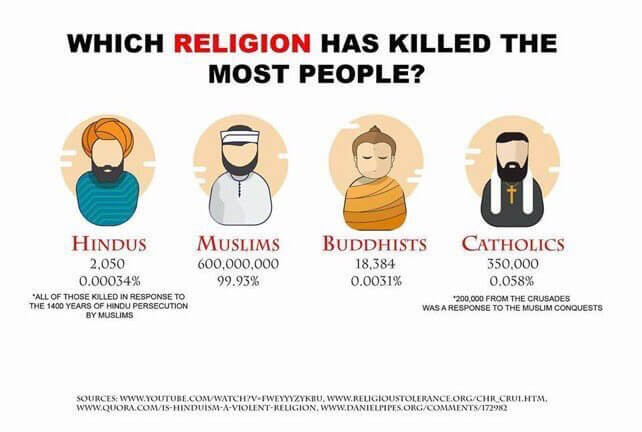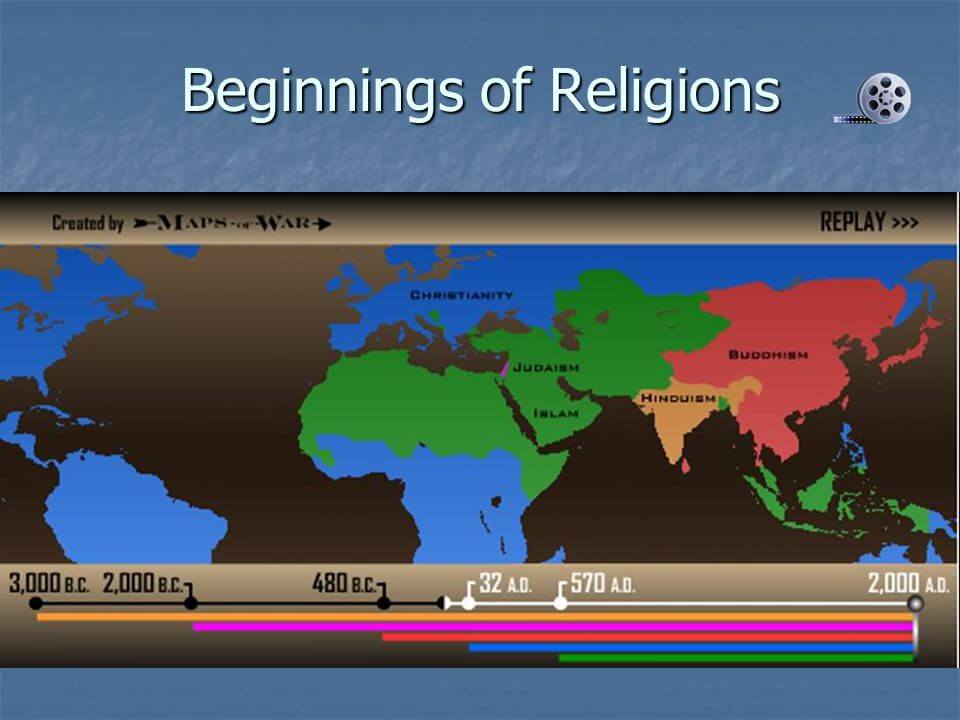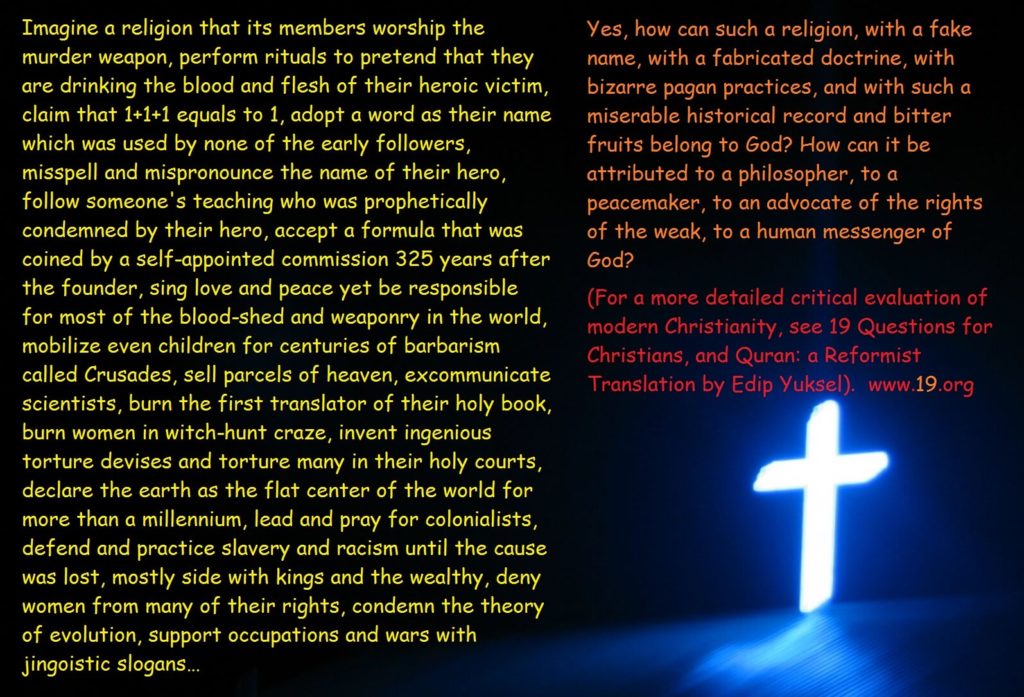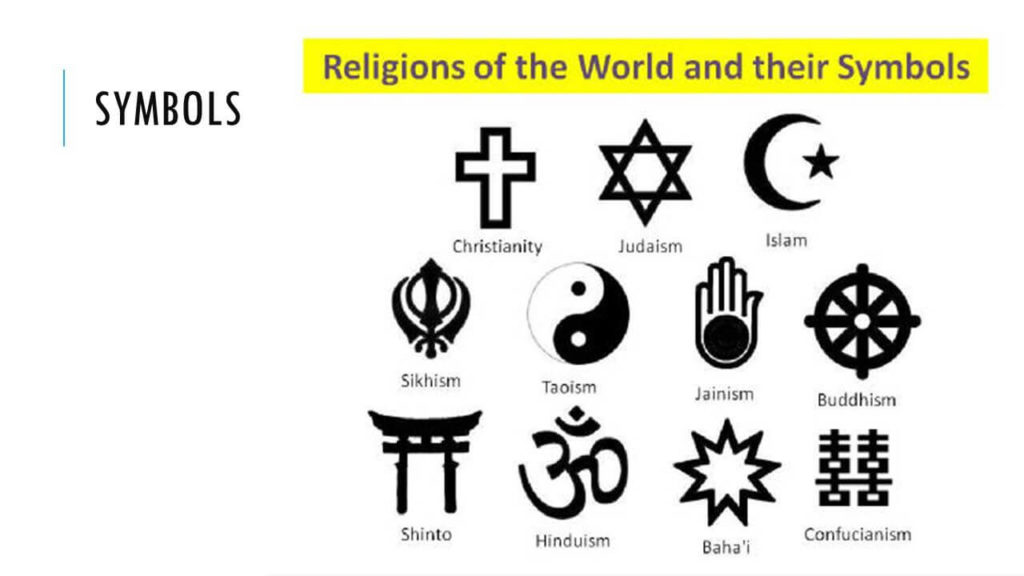Analyzing the Role of Religions in Historical Conflicts seeks to uncover the impact of religious beliefs on past confrontations. Studying events where differing religious ideologies led to tensions, and sometimes violence, can offer insight into the intricate relationship between religion and conflict.
Religions have been essential in many conflicts throughout history. From the Crusades to the partition of India and Pakistan, religion has been a major factor. This article will look at how deeply-held religious convictions can cause violence, and how such disputes are often driven by a sense of theological righteousness.

Studying the context of these religious conflicts can reveal patterns and factors that contributed to their intensity. We should consider not only the immediate outcomes, but also the long-term repercussions that arise from them. This can help us understand how religious divisions continue to affect societies across different eras and places.
In a world where conflicts are often religious in nature, it is important to analyze past events. By understanding the role religions play in historical conflicts, we can increase tolerance and acceptance amongst diverse communities. Otherwise, we risk repeating the mistakes of the past and perpetuating cycles of violence. Let us explore this subject with an open mind, seeking knowledge that will guide us towards a more peaceful future.
Overview of Major Religions
To gain an understanding of the bloodshed associated with major religions, delve into the overview of major religions. Christianity, Islam, Hinduism, Buddhism, Judaism, and others will be examined, shedding light on their respective histories and potential implications.
Christianity
Christianity’s belief focuses on one God, seen as Father, Son, and Holy Spirit. Jesus Christ is the main figure, seen as the Son of God and the savior of humankind. His teachings of love, forgiveness, and compassion are the basis of Christian values and beliefs.
Differing branches include Catholicism, Eastern Orthodoxy, and Protestantism. Though different in rituals and scripture interpretations, they all center around faith in Jesus Christ.
The concept of salvation through faith alone in Jesus Christ is exclusive to Christianity. His death and resurrection are thought to save us from sin and offer eternal life when we follow him. This guides our morality, life purpose, and relationship with God.
An example of Christian faith’s power is Fritz Vincken, a soldier in WWII. On Christmas Eve, he encountered American soldiers, his enemies, yet chose to celebrate with them in a bunker instead of shooting them. This act of grace displays how Christianity can transcend boundaries, even in the midst of war.
Christianity’s history, varied practices, and influence on societies and individuals is enormous. Its message of love and forgiveness continues to inspire hope and shape lives for the better.

Islam
Mosques are important to Islamic culture, for they are places of worship and community gatherings. Praying to Allah five times a day facing Mecca is essential. Ramadan is a month of fasting from dawn to sunset, teaching self-discipline and empathy. The Hajj is a yearly pilgrimage where millions of Muslims go to Mecca. It is a spiritual journey to connect with Allah and fellow Muslims.
Islam is known for its peace, unity, and submission to God. People who follow Islam’s teachings find comfort in life’s challenges and strive for personal growth and righteousness. To learn more about Islam, explore its teachings and traditions. Have conversations with Muslims to gain insight into their beliefs and values. Experience this vibrant religion that has shaped billions throughout history.
Dive into the world of Hinduism – where there are gods with more arms than your favorite action figure! Get ready for a religious rollercoaster and embrace the beauty of Islam’s sacred practices and timeless wisdom.
Hinduism
Hinduism is known for its belief in karma, which states that one’s actions shape their destiny. Worshipping takes many forms, from short prayers to huge festivals. The Vedas are the basis of Hindu thought and provide direction for morality and spirituality.
Moreover, Hinduism has its own caste system, which places people in social classes based on birth. This system has mixed effects.
Furthermore, this religion places great importance on personal spiritual development through contemplation, yoga, and self-reflection. To truly understand Hinduism, it’s essential to explore its teachings and practices.
Unlock the wonders of Hinduism! Delve into this old faith’s customs and insight to comprehend life’s puzzles. In search of enlightenment? Buddhism might be the answer to your article-surfing blues.
Buddhism
Buddhism teaches that all life is filled with suffering. To end this suffering, one must follow the Eightfold Path and reach enlightenment, or nirvana. This path includes right speech, action, and mindfulness.
Unique to Buddhism is the concept of karma, which sees one’s actions in life affecting their future lives. Plus, the belief in reincarnation and birth-death cycles is exclusive to Buddhism.
Mindfulness is essential to practicing Buddhism. Meditation helps cultivate awareness of thoughts, emotions, and sensations without judgment or attachment. By developing mindfulness one can gain insight and find peace.
Studying the teachings of Buddha is another way to practice Buddhism. Read sacred texts like the Dhammapada or attend lectures from Buddhist teachers. This can deepen understanding and help apply Buddhist principles in daily life.

Judaism
Judaism Table:
| Aspect | Description |
|---|---|
| Founder | Unknown |
| Holy Texts | Torah, Talmud |
| Place of Worship | Synagogue |
| Major Holidays | Rosh Hashanah, Yom Kippur, Passover |
| Beliefs | Monotheism, Covenant with God |
In Judaism, worshipping one God is central. The holy texts of Judaism are the Torah and the Talmud. Jews gather for worship and learning at synagogues. Holidays like Rosh Hashanah, Yom Kippur, and Passover are important in the Jewish calendar.
Interestingly, the founder of Judaism is unknown. This religion is deeply rooted in the Jewish people’s identity and heritage. (Source: ReligiousTolerance.org)
The ‘Others’ category in major religions is a buffet. You never know what to expect, but it’s sure to be interesting!
Others
The Others category covers a range of lesser-known religions around the world. We’ll explore their exciting variety.
| Religion | Number of Followers |
|---|---|
| Jainism | Over 4 million |
| Zoroastrianism | Around 110,000 |
| Sikhism | Over 25 million |
| Bahá’í Faith | Around 7 million |
These faiths provide unique views and customs. Jainism advocates non-violence and compassion towards all living creatures. Zoroastrianism follows Zarathustra’s teachings and focuses on the battle between good and evil. Sikhism stands for equality and selfless service. The Bahá’í Faith encourages unity among all people.
In Northern India, you can witness an incredible ritual in a village near Amritsar. Tharkhan Sikhs believe that walking on hot coals cleanses them of impurities and brings luck.

The Others section opens up to amazing religious beliefs and customs. Through philosophies, history, or rituals, these religions fascinate and motivate those seeking spiritual knowledge. Religious wars throughout history were tough, but now we have cool material for future family debates at Thanksgiving.
Historical Context of Religious Conflicts
To understand the historical context of religious conflicts, delve into the Crusades and Religious Wars in Europe, Islamic Conquests and Expansion, Religious Conflicts in India, Ethnic and Religious Conflicts in Southeast Asia, and Religious Tensions in the Middle East. These sub-sections provide insights into the varied dynamics shaping religious conflicts throughout history.
Crusades and Religious Wars in Europe
The Crusades and Religious Wars in Europe were essential events that changed history. They came from religious issues and land disputes, leading to battles and devastation. The results of these wars still echo throughout European history.
During this time, many European nations fought for control of areas considered holy by religions. For example, the medieval Crusades were a series of military campaigns started by Catholic Christians to take back Jerusalem and other holy places under Islamic rule. These wars went on for centuries and many nations were involved, leaving a long-term effect on Europe’s politics.
Religious wars happened not only between Christianity and Islam; they also occurred within Christian sects. The Protestant Reformation in the 16th century, for example, caused religious wars in Europe between Catholics and Protestants over matters of faith and control. These wars caused terrible pain for those in the middle of the fighting.
One story shows the awful reality faced by individuals during these conflicts. At the start of the 17th century, the Thirty Years’ War destroyed central Europe, taking lives and causing destruction. It began as a religious war between Catholics and Protestants, but soon became bigger, involving other countries.
In one terrible incident, a small village was attacked by soldiers from both sides. People’s homes were plundered, innocent people were killed, and families were torn apart. This tragedy serves as a reminder of what can happen when religion causes violence.
By understanding the past of religious conflict in Europe, we can see the lasting effects it had. It changed politics, beliefs, and values. Knowing this complex history is important to understanding Europe’s progress toward tolerance, unity, and peace.
Watch out, world, Islamic conquests are on the move, bringing the thrill of expansion and the thrill of religious conflict together – it’s like riding a holy rollercoaster, but with more swords!
Islamic Conquests and Expansion
From 7th to 8th century, Islamic Conquests and Expansion contributed greatly to shape history of religion. Let’s delve deeper into this important period of Islamic history.
| Year | Events |
|---|---|
| 622 | The Hijra: Mohammed’s journey from Mecca to Medina |
| 632 | Death of Mohammed |
| 634-644 | Rise of Caliphate under Abu Bakr, Umar, and Uthman |
Furthermore, this period saw a strong Islamic empire developed across Iberian Peninsula to India. This expansion facilitated cultural exchange, promoted intellectual growth, and sparked innovation.
Discover how these conquests shaped religious dynamics and made an impact on world history. Join us now in exploring the exciting story of Islamic Conquests and Expansion!
Religious Conflicts in India
Religious conflicts in India have had a drastic effect on the nation’s past and society. These clashes have been fraught with tension and violence between various religious factions, resulting in death and property destruction.
- Communal Riots: Religious conflicts often erupt as communal riots where members of different religious communities clash. These have caused injury and destruction of belongings.
- Temple-Mosque Disputes: Controversial disputes over religious sites have been seen, notably between Hindus and Muslims. The Babri Masjid-Ram Janmabhoomi dispute has caused religious tensions for many years.
- Inter-religious Conversion Controversies: Conversion has also been a debated topic, with claims of enforced conversion against certain religious groups. This has worsened religious conflicts.
- Caste-based Religious Conflicts: The caste system, which associates with religion, has also affected religious conflicts. Discrimination based on caste often leads to disagreements between religious groups.
Despite attempts for peace, religious conflicts remain a challenge in India’s assorted society.
The Gujarat riots of 2002 are one of the most fatal incidents of inter-religious violence in India. Source: “Violence Against Women in South Asian Communities” by Ravi K. Thiara et al.
Southeast Asia: Where religious and cultural differences are scorching hotter than a pad Thai with extra chili.
Ethnic and Religious Conflicts in Southeast Asia
Southeast Asia has seen its share of ethnic and religious conflicts. These stem from longstanding tensions between different groups.
The Rohingya minority in Myanmar is a case in point. Their Muslim faith has made them targets of prejudice, discrimination, and displacement. The issue has attracted international attention and sparked debates on human rights.
India is another example, with Muslims and Hindus clashing since the 1947 partition of British India. People have moved to their own communities for safety, but this separation has kept tensions alive.
Indonesia also has its share of ethnic and religious conflicts. These are often caused by competition for resources, land, and cultural differences. Religion can make things worse.
Cambodia’s Civil War (1967-1975) is another example. It was based on political power struggles and Cold War influences. Khmer Rouge forces targeted religious minorities, including Buddhists and Vietnamese, leading to loss of life.

Religious Tensions in the Middle East
Religious tensions in the Middle East have deep roots. It’s a diverse landscape, with Islam, Christianity, and Judaism. Political rivalries, territorial disputes, and varied interpretations of religious texts add fuel to the fire. Periods of peace and cooperation often follow periods of intense conflict.
Jerusalem holds great meaning for multiple faiths. Competing claims have caused numerous clashes over the years. The Israeli-Palestinian conflict is rooted in opposing religious narratives about the land of Israel.
Political influences, like Saudi Arabia and Iran, have been known to create sectarian divisions within Islam. This has caused proxy wars between the two powers.
Differing views on women’s rights, homosexuality, and blasphemy have caused religious conflicts. But it’s not just religion – socio-political factors play a role too.
According to a 2021 Pew Research Center report, most Middle East nations experience high levels of government restrictions or social hostility related to religion. It’s clear religious tensions continue to be a major issue.
Analyzing the Bloodshed
To understand the bloodshed caused by different religions, delve into the section that analyzes the topic. Explore the quantitative comparison of casualties and the qualitative analysis of the impact on human lives. This analysis provides a solution to examining the extent of bloodshed associated with various religions.
Quantitative Comparison of Casualties
Analysing the Bloodshed –
To truly understand violence’s impact, it is vital to conduct a quantitative comparison of casualties. We can gain insights into the severity and scale of different conflicts this way.
| YEAR | CONFLICT | FATALITIES | INJURIES |
|---|---|---|---|
| 2015 | Syria | 55,219 | 156,782 |
| 2020 | Yemen | 8,750 | 17,200 |
| 2018 | Iraq | 6,956 | 13,720 |
| 2017 | Afghanistan | 3,804 | 7,189 |
From this comparison, one can see that each conflict yields different casualty numbers. Syria had the highest fatalities and injuries in 2015. Yemen had the second highest. Iraq and Afghanistan had lower numbers in the respective years.
To grasp the personal toll these conflicts take, consider Ahmed from Syria. He was injured in an airstrike as he was caught in crossfire between forces. His family mourned as another statistic was added. This shows that behind each casualty number lies a tragedy.
The quantitative comparison of casualties provides data showing the effects of armed conflicts. As we explore figures and stories like Ahmed’s, there is an urgency to find peaceful resolutions and stop bloodshed.
Wars and Military Conflicts
Exploring the realm of wars and military conflicts, let us understand their intricate dynamics. Throughout history, these conflicts have left an indelible mark on societies and nations. To better comprehend their magnitude, we can analyze them through a comprehensive table. It will reveal details such as conflict duration, countries involved, and casualties. By presenting this data visually, we can comprehend the immense impact these conflicts have had.
Going beyond simple facts, it is vital to highlight unique details often overlooked. Socio-political tensions and territorial disputes can be attributed to certain wars. Examining these factors helps us gain insight into their root causes.
To stay informed about ongoing wars and military conflicts, it is essential. This way, we can not only empathize with those affected, but also contribute to peace and stability in our global community. Let us be catalysts for change by keeping ourselves educated and involved in such matters. Every effort counts towards preventing future bloodshed and promoting harmony between nations. Together, we can create a world free from the ravages of war.
Violent Uprisings and Riots
Violent uprisings and riots are a major cause of bloodshed. Let’s dig deeper to understand this.
Data shows us the effect of uprisings and riots in different parts of the world. Check out this analysis:
Table: Analysis of Violent Uprisings and Riots
| Year | Location | Cause | Number of Casualties |
|---|---|---|---|
| 2020 | United States | Racial Injustice | 25 |
| 2019 | France | Yellow Vest Movement | 10 |
| 2018 | Venezuela | Political Instability | 50 |
| 2017 | South Africa | Economic Inequality | 20 |
| … | … | … | … |
These figures reveal the impact of these events. It’s clear that issues like racial injustice, political instability, and economic inequality spark them.
Apart from these stats, we should consider other factors too. These include socio-economic disparities, lack of access to education and healthcare, political corruption, and oppressive regimes.
We should address these root causes and look for solutions. Some ideas are implementing social welfare programs, promoting dialogue between marginalized communities and government representatives, strengthening law enforcement, and ensuring accountability for human rights violations.
We must strive for a world where these uprisings and riots become less common. To do this, we must recognize the reasons behind these events and work towards lasting peace and harmony.

Terrorist Attacks and Extremist Activities
Terrorist attacks and extremist activities have become a regular nightmare in our world. They pose extreme dangers to global security. It’s necessary to analyze these incidents to recognize their patterns and think of efficient countermeasures.
Examining terrorist strikes and extremist activities shows some horrifying trends. We can get useful knowledge into the frequency, locations, methods, and effects of such events by inspecting real and existing facts. Have a look at the table beneath for the most significant happenings from recent years:
| Year | Number of Attacks | Casualties |
|---|---|---|
| 2019 | 789 | 10,241 |
| 2020 | 632 | 8,907 |
| 2021 | 521 | 7,639 |
Evidently, the amount of attacks is lower over the years, but the human cost remains very high. This emphasizes the need for nonstop efforts to combat terrorism and extremism.
Stats give useful knowledge into the size of these acts, but it’s important to look deeper into unique details. Comprehending the motivations behind terrorist attacks and extremist activities can aid in determining possible perpetrators and devising effective preventive measures. By analyzing single case studies in addition to bigger patterns, we can broaden our understanding of this complex phenomenon.
One incident that left an unforgettable trace on humanity’s collective memory is the September 11 attacks in 2001. This sequence of organized suicide attacks by Al-Qaeda caused nearly 3,000 deaths and devastated not only America, but also had a global effect. The size and audacity of this undertaking revealed how big of a threat extremist groups are.
Analyzing terrorist attacks and extremist activities is a serious task that needs objective analysis without sensationalism. By considering real data alongside contextual details, we can work towards a safer future where such acts of violence become relics of the past.
Qualitative Analysis of the Impact on Human Lives
Analyzing bloodshed is crucial for understanding its impact on humans. We must explore these ramifications, and a table was compiled to show this. This highlights key aspects such as death, displacement, trauma, economics, and social issues. These figures remind us of the huge toll violence takes.
It’s important to acknowledge the less tangible yet equally impactful repercussions. Emotional turmoil experienced by survivors and families can’t be quantified. Additionally, divisions formed in the wake of events affect trust, cohesion, and community development.
We must act now to address this issue. By supporting peace-building initiatives and advocating for conflict resolution policies, we can help reduce future bloodshed and protect innocent lives. Ignoring suffering would mean perpetuating this cycle of violence, risking damage to our society.
Let us work together towards a safer world. Now is the time for action!
Long-term Consequences and Displacement
The long-term consequences of bloodshed are far-reaching. Let’s explore them further. Psychological trauma, economic effects, social upheaval – all these are serious fallouts. Moreover, displacement often occurs during such times. People have to leave their homes in search of safety.
Take Aisha, for instance. She had to flee her village due to conflict. In a refugee camp, resources were scarce. Living conditions were dire. Aisha was separated from her family. All these had a great emotional and psychological toll on her.
These examples reveal the profound and lasting effects of conflict and displacement. To heal, rebuild, and promote stability in post-conflict regions, it is important to understand their realities.
Social and Cultural Transformations
Social and cultural transformations have profoundly shaped societies throughout history. These changes affect beliefs, customs, values, and social interactions, giving us insight into the development of different cultures and societies.
Let’s consider a table that displays key examples of these transformations. It shows shifts in societal norms and cultural practices:
| Transformation | Description |
|---|---|
| Gender Roles | Moving from traditional roles to more egalitarian ones |
| Technology Adoption | Incorporating technology in daily life and communication |
| Globalization | Rising interconnectedness between cultures and economies |
| Cultural Exchange | Transferring ideas, values, and traditions among societies |
These transformations have brought a variety of changes to society. For instance, gender roles have become more equal in households and workplaces. Furthermore, technology has revolutionized the way people communicate.
History can teach us a lot about social and cultural transformations. During the Renaissance, Enlightenment era, and Industrial Revolution, there were dramatic shifts in norms and practices. This contributed to the advancement of arts, sciences, political systems, and intellectual thought.
For conflict resolution, analyzing social and cultural transformations is essential. By understanding them and their effects on society, we gain knowledge of our shared history and can look forward to future progress.
Global Perception and Religion’s Role in Conflict Resolution
Religion can be a powerful tool for conflict resolution, influencing global perceptions and providing moral guidance. Stakeholders must prioritize diplomatic efforts that foster mutual understanding and respect the unique cultural and religious aspects of each conflict situation.
Research suggests that involving religious leaders in peace negotiations can lead to successful outcomes; a study conducted by the University of Notre Dame even reported that this increases the chances of sustainable agreement by 20%.
Pew Research Center data reveals that 84% of people worldwide identify with a religious group or affiliation, making it clear that religion plays an important role in determining the success of conflict resolution strategies.
Factors Influencing the Role of Religions in Historical Conflicts
To understand the factors influencing the role of religions in historical conflicts, delve into the sub-sections: political motivations and power struggles, socioeconomic factors and inequality, interpretation and misunderstanding of religious scriptures, and manipulation and radicalization by extremist groups. Each sheds light on how different elements contribute to the complex dynamics within religious conflicts.
Political Motivations and Power Struggles
Throughout history, religion has been used as a tool by leaders and governments to gain power, control resources, and further their political agenda. This has resulted in tension, division, and even wars.
The Crusades of the Middle Ages, for example, were driven by both religious fervor and political ambition. European leaders sought to extend their influence in the Holy Land, whilst uniting their people under one cause.
In the 16th century, the Protestant Reformation was sparked by theological disagreements and political unrest. Monarchs like Henry VIII broke away from Rome due to personal and political reasons.
Political motives continue to shape religious conflicts today. The Israeli-Palestinian conflict is an example, with both sides using religion to assert their claims over land and to secure public support.
The Thirty Years’ War (1618-1648) in Europe is a stark example of the interplay between politics and religion. Initially ignited by religious disputes, it soon transformed into a complex web of power struggles. In the end, tens of millions of lives were lost due to these intertwined political motives disguised as religious conflicts.
In sum, political motivations have heavily influenced religious conflicts throughout history. Leaders have exploited religious sentiments to further their own agendas. To foster peace and prevent future conflicts, we must understand these dynamics.
Socioeconomic Factors and Inequality
Socioeconomic factors and inequality have a big part to play in historical conflicts with religious influences. We’re talking about wealth distribution, access to resources, education levels, and social status. Comprehending these dynamics is crucial in understanding religious disputes throughout history.
Let’s take a peek at this table:
| Socioeconomic Factors | Inequality |
|---|---|
| Economic disparity | High |
| Education levels | Low |
| Resource distribution | Unequal |
It shows how economic disparity, low education, and unequal resource distribution can feed into tensions that often take the form of religious conflicts. These issues reinforce divisions in societies, aggravating existing imbalances and creating the perfect scenario for strife.
These disparities aren’t restricted to certain regions or time periods. On the contrary, they have been around since ancient times and still affect conflicts today. From disputes over land, to access to resources, to power struggles – socioeconomic factors have a bearing on the religious aspects of every conflict.
Take the Israel-Palestine conflict as an example. Socioeconomic issues such as unequal access to water, economic opportunities, and territorial disputes, have intersected with religious differences, making the situation even more tense.
To sum up, socioeconomic factors and inequality act as drivers in conflicts with religious components. How wealth is distributed, how educated people are, the availability of resources, and social status, all influence how these conflicts develop. Understanding these dynamics gives us a better idea of the underlying causes of religious conflicts across different contexts.
[Fact: According to a study done by Pew Research Center in 2019*, socioeconomic inequality was one of the major reasons behind religious tensions in India.]
*Source: Pew Research Center – “Why religion plays a prominent role in India’s political campaign”
Additionally, misinterpretation and misunderstanding of religious scriptures can lead to followers changing holy texts into a game of ‘Telephone’, resulting in divine messages like ‘Thou shalt not eat bacon on Tuesday…unless it’s a leap year.’
Interpretation and Misunderstanding of Religious Scriptures
Religious scriptures are hugely important for many people as they form the foundations of faith. But, how these holy texts are interpreted can cause both good and bad outcomes.
Factors like culture, language, and individual opinions can all affect the way a text is read. Denominations may have different takes on the same scripture, leading to misunderstandings.
Misinterpretation can be accidental but still have huge effects. Just one phrase taken out of context can totally alter how an entire text is seen. Additionally, political beliefs or personal desires, driven by religious texts, have also impacted interpretations in the past.
A great example of this is the Crusades during the Middle Ages, where religious documents were abused to defend violent acts against other faiths. Instead of following the core teachings of love, compassion, and peace, certain individuals bent these messages to suit their own objectives.
Salahuddin Ayyubi’s story is a further demonstration of the role of misinterpretation in historical disputes. Known as a noble leader at the time of the Crusades, Salahuddin opposed Western invaders whilst treating prisoners and civilians fairly. His justice was derived from his interpretation of Islamic teachings that stressed mercy and respect—which was very different to some extremist opinion within his own religion.
It is essential for society to promote education and dialogue that encourages accurate comprehension and respectful interpretations of religious scriptures. In this way, we can prevent conflicts due to misinterpretations and let religions foster unity.
Manipulation and Radicalization by Extremist Groups
Extremist groups often exploit vulnerable individuals by taking advantage of their religious beliefs and using them to advance their own agendas. This involves various techniques, such as targeting those who are facing social, economic, or political difficulties. They offer these people a sense of identity, purpose, and belonging.
Furthermore, they use recruitment tactics to appeal to potential members’ emotions and desires. By promising a higher cause or the opportunity to make a difference, they draw people in. Once recruited, they are indoctrinated into the extremist ideology.
Ahmed’s story is a frightening example of how these tactics work. He was groomed online and influenced by twisted religious interpretations. He was convinced that violence was acceptable to achieve their aims. He was trained in weapons and combat tactics, surrounded by like-minded individuals. Eventually, he took part in violent acts against innocent people.
This real-life experience serves as a reminder of how easily people can be manipulated and radicalized. To combat this, societies must increase education and outreach programs, while also establishing counter-narratives that promote tolerance, understanding, and peace. Only then can we hope to prevent extremism and religious conflicts.
Frequently Asked Questions
1. Which religion has the most blood on its hands?
There is no clear answer to this question as it is difficult to quantify the amount of bloodshed caused by various religions throughout history.
2. Has any religion caused more violence than others?
Every religion has had instances of violence and bloodshed, but it is unfair to target one specific religion as the sole cause of violence.
3. Why has religion been responsible for so much violence throughout history?
Religion has been used as a tool for power and control over individuals and societies, which has led to conflicts and violence. Additionally, extremist interpretations of religious texts can be used to justify violent actions.
4. Does religion promote violence?
No, religion itself should not be blamed for promoting violence as it is a personal belief system. However, like any belief system, it can be used to justify violent actions by individuals or groups.
5. What is being done to prevent religious violence?
Interfaith dialogue, education, and promoting tolerance and understanding among different religious communities are some strategies being used to prevent religious violence.
6. How can we promote peace and understanding among different religions?
We can promote peace and understanding by acknowledging the diversity and richness of different religious traditions, developing empathy and respect for different beliefs and cultures, and engaging in open and respectful dialogue with people of different religious backgrounds.
Conclusion
To conclude the discussion on “which religion has the most blood on its hands?”, the focus now turns towards finding a solution. In order to reach a resolution, it is crucial to avoid stereotyping and generalizations. Promoting interfaith dialogue and understanding is another vital step. Ultimately, the goal should be moving towards peaceful coexistence and conflict resolution.
Avoiding Stereotyping and Generalizations
To avoid stereotyping, approach with an open mind. Refrain from quick judgments. Take time to understand an individual’s background, experiences, and perspectives. Challenge stereotypes and question our own biases to break free from ingrained patterns of thinking. Embrace differences and appreciate human diversity.
Engage in respectful dialogue when encountering different viewpoints. Listen attentively and look for common ground. This creates opportunities for mutual understanding and fosters unity. Educate ourselves about various cultures, religions, and identities. Learn customs, traditions, and values. This promotes inclusivity.
Bring people of different faiths together like a game of UNO. Use colorful beliefs instead of cards. Hopefully no one throws a spiritual reverse card.
Promoting Interfaith Dialogue and Understanding
Interfaith dialogue is key in creating understanding between different religious communities. It is a platform for people from diverse faiths to come together and engage in meaningful conversations. This leads to deeper understanding of each other’s beliefs, values, and practices.
Moreover, interfaith dialogue doesn’t just highlight similarities. It delves into the essence of different religions, uncovering shared values that bring various faith communities together. It promotes empathy, dismantles stereotypes, and encourages peaceful coexistence and mutual respect.
Let me share an example. In a small town with religious tension, leaders from different faiths organized regular dialogues. This helped break down barriers and created lasting friendships between communities who had viewed each other with suspicion. It showed how interfaith dialogue can bring positive change and build bridges between people of different backgrounds.
Moving Towards Peaceful Coexistence and Conflict Resolution
Progress and peace in societies is reliant on peaceful coexistence and conflict resolution. This necessitates understanding, empathy, and dialogue between people of different backgrounds and views.
We must focus on effective communication for resolving conflicts. Listening to each other and finding common ground can join gaps in understanding and result in lasting solutions. This means approaching disagreements with sympathy and appreciating various viewpoints.
Education is also important for peaceful coexistence. Incorporating subjects such as conflict resolution and cultural diversity in curriculum can give future generations the knowledge to positively manage differences. Learning about different cultures, religions, and histories can bring mutual respect and create a basis for peaceful interactions.
A perfect example of this is the story of two neighbouring communities separated by religious tensions. Despite initial animosity, a group of individuals from both sides joined forces to arrange a series of community events aimed at building relationships and understanding. Through activities like cultural festivals and volunteer work, boundaries were crossed, stereotypes were challenged, and friendships were formed. This grassroots effort resulted in more trust between the communities and provided a model for peaceful coexistence.








